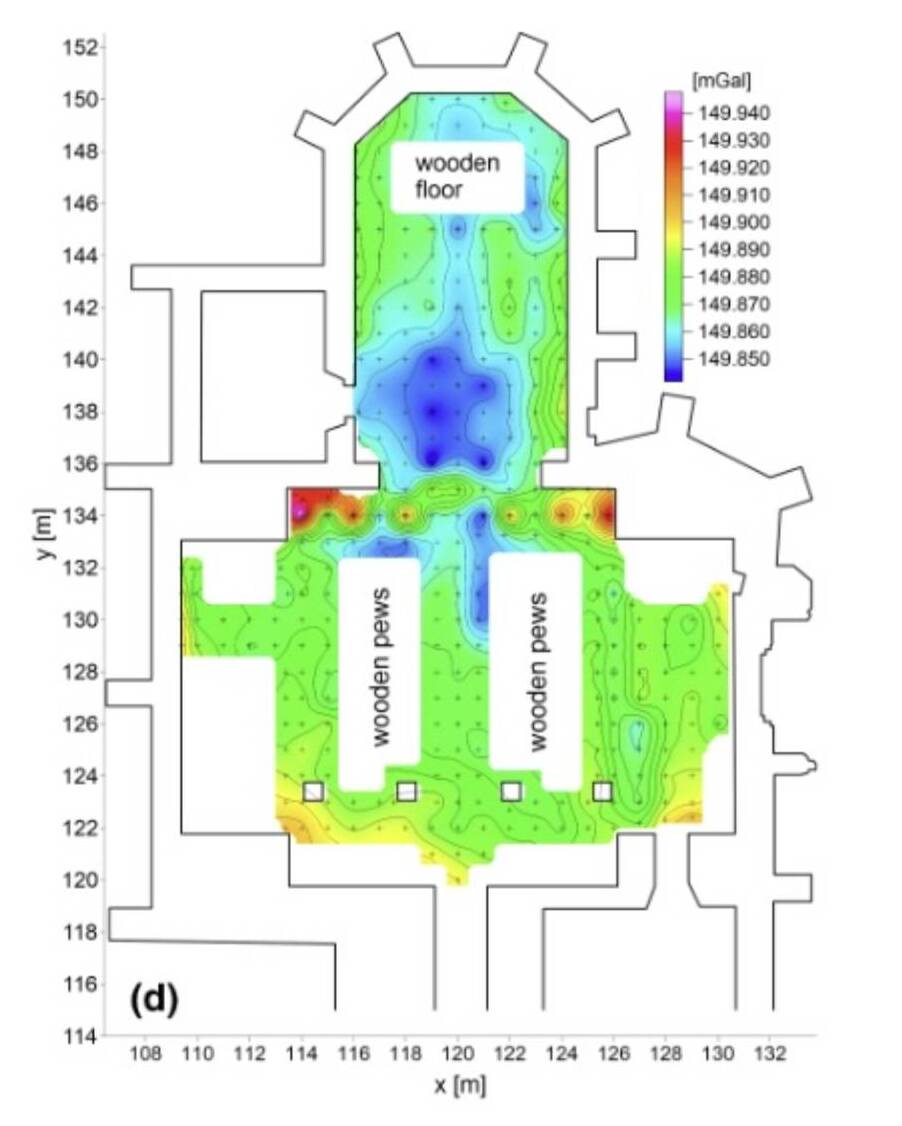
Bouguer gravity anomaly map from Descent of Holy Spirit Church, Moldva nad Bodvou (from Pasteka et al. 2020).
Gravity methods have been applied to archaeology since the 1950’s with potential to detect and determine architectural remains like filled caverns, cavities, crypts, larger tombs, cellars, tunnels, etc. High accuracy in calculating terrain corrections is required.
The Great Cheops Pyramid in Egypt was investigated to explore the existence of more chambers (Lakshmanan, and Montlucon, 1987).
The relatively large dimensions/volumes of crypts (up to 10 – 20 m3) make them a suitable target for microgravity detection, with typical anomalies of -20 to -80 µGal. Many churches and cathedrals in Slovakia and the Czech Republic have been successfully investigated (Pasteka et al. 2020).